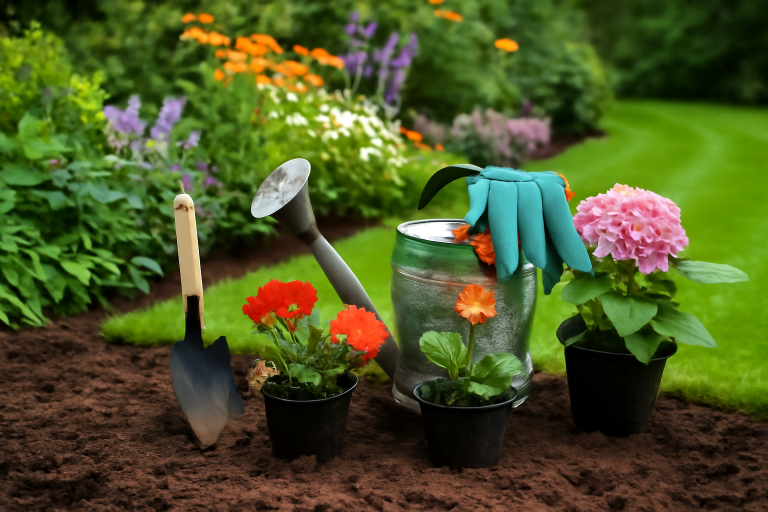

Urban living often means limited space, but that doesn’t mean you have to sacrifice your love for nature and greenery. One of the best ways to incorporate plants into a small living space is by creating a vertical garden. Vertical gardening allows you to grow a wide variety of plants without taking up valuable floor space, making it an ideal solution for small apartments, condos, or even small balconies.
In this article, we’ll explore how to create a vertical garden in small spaces, the benefits of vertical gardening, and how to choose the right plants and materials to maximize your green space.
Vertical gardening is the practice of growing plants upward, rather than spreading them out on the ground. This method uses structures such as trellises, wall-mounted planters, or hanging baskets to support plant growth, allowing gardeners to use vertical space effectively.
Whether you’re working with a tiny balcony, a wall, or even just a small apartment window, vertical gardens can transform your living space into a lush, green oasis. This gardening style is particularly useful for people who want to grow plants but don’t have access to a traditional garden or yard.
Vertical gardens offer a variety of benefits, especially when space is limited:
In small spaces, vertical gardens are a practical solution. By growing plants upward, you can utilize otherwise unused space, such as walls, railings, and fences. This makes vertical gardens perfect for city living where horizontal space is scarce.
Plants absorb carbon dioxide and release oxygen, improving air quality. A vertical garden can help purify the air in your living space, making it healthier and more enjoyable to breathe. Additionally, the plants can help reduce pollutants and provide natural humidity.
A well-designed vertical garden adds beauty and vibrancy to any space. With the right choice of plants and creative arrangements, vertical gardens can become an eye-catching feature in your home. You can choose from a variety of plants, flowers, and greenery to create a visually stunning display.
In urban environments, privacy can often be a concern. Vertical gardens can act as natural privacy screens, especially when grown along balconies or fences. Tall plants or climbing vines can shield you from the outside world, providing a sense of seclusion without sacrificing your view.
Creating a vertical garden in a small space may seem daunting, but it’s easier than you might think. Here are the basic steps to help you get started:
First, assess your space and determine where the vertical garden will go. Consider factors such as sunlight, accessibility, and available space. If you’re using a wall, make sure it’s sturdy enough to support the weight of the plants and planters.
For outdoor vertical gardens, balconies or walls that get at least a few hours of sunlight a day are ideal. For indoor gardens, choose a location near a window where the plants can receive sufficient light.
Not all plants are suited for vertical gardening, so it’s important to choose plants that will thrive in a vertical setup. Some of the best plants for vertical gardens include:
Make sure to choose plants that are appropriate for your space’s light conditions. For example, if you’re growing your vertical garden indoors, choose plants that can tolerate lower light levels.
There are several options for creating the structure for your vertical garden. Some popular choices include:
When planting in a vertical garden, soil and watering can be tricky. Vertical gardening often involves smaller containers or pockets, so make sure to choose lightweight, well-draining soil that retains moisture without becoming too heavy.
For watering, consider a drip irrigation system or self-watering planters, as these help distribute water evenly and reduce the risk of over-watering. Since vertical gardens often dry out quickly, regular watering is essential, but make sure not to overdo it to avoid root rot.
Vertical gardens generally require less maintenance than traditional gardens, but they do need some care to stay healthy and vibrant. Regularly check for pests, dead leaves, or mold, and prune plants to encourage healthy growth.
Also, be mindful of the weight of the plants and make sure your structure is secure, especially if you’re using heavy plants or large planters. If you’re growing edible plants, be sure to harvest regularly to keep the garden productive.
Once you’re familiar with the basics of vertical gardening, you can get creative with your design. Here are some fun and unique ideas to try:
A living wall is an intricate design that features plants growing directly on a wall. This type of vertical garden can be quite stunning, with a variety of plants arranged in patterns or color schemes. It’s a great way to turn a plain wall into a piece of living art.
If you have a balcony, you can turn it into a private green oasis by installing climbing plants along the railing. This helps create a natural privacy screen and adds a touch of greenery to an otherwise hard surface.
Install a vertical garden specifically for herbs. Mount small planters or potted plants on a wall, and grow your favorite herbs like parsley, rosemary, and oregano. This not only saves space but also gives you fresh ingredients for cooking.
Vertical gardening is a fantastic way to add greenery to small spaces, whether you’re in an apartment, condo, or townhouse. It allows you to maximize limited space while creating a beautiful, relaxing environment. By selecting the right plants, structures, and watering systems, you can create a thriving vertical garden that will bring nature into your home in a sustainable and stylish way.
Whether you’re growing flowers, herbs, or vegetables, vertical gardens are a creative solution to urban gardening challenges, making it possible to enjoy the beauty of nature, even in the smallest spaces.